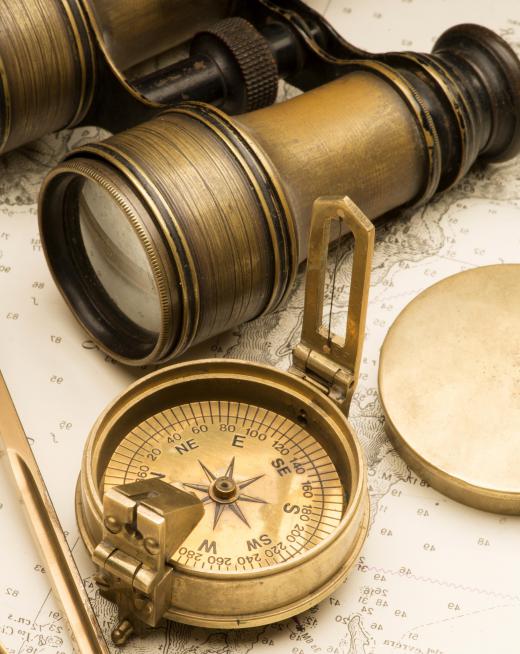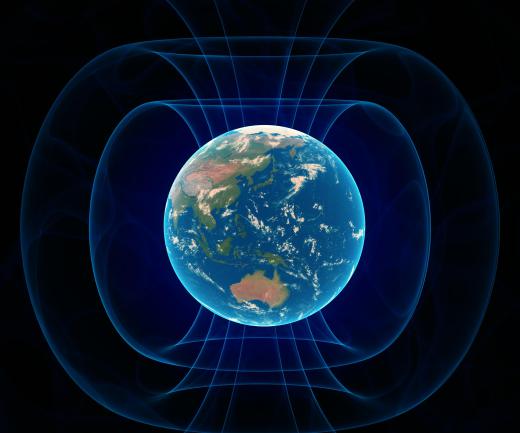What is Magnetite?
 Niki Foster
Niki Foster
Magnetite is a type of iron oxide with natural magnetic properties. In fact, it is the most magnetic naturally occurring mineral on Earth and was once used in compasses. Its chemical name is ferrous-ferric oxide, and its chemical formula is Fe3O4.
This mineral occurs in nearly all igneous and metamorphic rocks, though usually only in small particles or in a solution with other minerals. Some beaches, often called black sand beaches, have heavy magnetite deposits. There are also significant, concentrated deposits of it and hematite, a mineral resulting from the reaction of magnetite with oxygen, in very old sedimentary rock formations known as banded iron formations.

In addition to geological formations, magnetite is found in small quantities in certain bacteria and animals. Chitons, a type of mollusk, have the crystals on their radula, a scraping appendage used to eat. These crystals make the radula very abrasive, allowing chitons to scrape food from rocks.
Magnetite naturally occurs in the brains of some birds and insects, notably bees, and even in humans. It is hypothesized to allow for a sense called magnetoreception or magnetoception, through which the animals in question have a natural sense of direction. Biomagnetism may allow animals to sense the magnetic field of the Earth, much as a compass uses magnetism to indicate the cardinal directions. For example, crystals in the brains of certain birds may help trigger and direct their migratory flight when the seasons change.

Humans realized the magnetic properties of magnetite and its navigational possibilities early in their history. There is archaeological evidence that the Olmecs of ancient Mexico had developed a rudimentary compass using hematite by around 1000 BCE. The attractive properties of lodestone, a particular crystal formation of magnetite, were mentioned in Chinese literature dating from the first century CE, and the Chinese were using magnetized needle compasses by the 11th century. Europeans began using a similar device a few decades after the Chinese, and it is unknown whether or not it was independently developed.
AS FEATURED ON:
AS FEATURED ON:













Discussion Comments
Yes it is, because you can come up with a magnet that attracts hair/fur.
Is it possible that magnetite could be linked to a prophetic sense of danger, in animals, and even humans?
Post your comments